Last updated on March 26, 2024
If you’ve ever found yourself Googling “best Christmas markets in Europe,” you’ve probably seen the Nuremberg Christmas Market topping the list more than once. And really, it shouldn’t be surprising considering it’s one of the most popular Christmas markets in the world, drawing in around 2 million visitors each year.
All the photos we’d found online showed it as a winter wonderland, complete with quaint wooden huts and the warm glow of festive lights creating an almost magical atmosphere. Even our German friend couldn’t recommend it enough. So, we finally decided to see what all the fuss is about and booked a trip to Nuremberg to get in the holiday spirit.
In this blog post, I’m going to walk you through all the Nuremberg Christmas Markets (yes, there’s more than one!). Whether you’re a Christmas market veteran or just thinking about your first visit, I’m here to share all the insider tips and must-see spots. So, settle in with your favourite winter drink, and let’s answer the burning question: is the Nuremberg Christmas Market really worth it?


When does the Nuremberg Christmas Market open?
The Nuremberg Christmas markets kick off each year on the Friday before the first Sunday of Advent and wrap up on Christmas Eve, unless it falls on a Sunday.
In 2023, the celebrations start on 1st December with an opening ceremony at 5:30 pm. From then on, you can enjoy the markets every day of the week, from Monday to Sunday, between 10 am and 9 pm. On Christmas Eve, 24th December, the markets will be open from 10 am to 2 pm for those last-minute festive touches.

Looking ahead, the Nuremberg Christmas Markets will continue to spread holiday cheer in the coming years. In 2024, the markets will be open from 29th November to 24th December. And in 2025, you can join in the festivities from 28th November right up until 24th December. So mark your calendars and get ready for some holiday magic! 🎄✨
Where does the Nuremberg Christmas Market take place?
If you’ve ever strolled through a German Christmas market, or if you’ve checked out my guide to the Hamburg Christmas Markets, you’ll get why I refer to them in the plural. In major German cities, it might seem like you’re wandering through one giant Christmas market. But actually, these are often several distinct markets, nestled so close together that they seamlessly merge into a single festive experience.


Nuremberg is no exception here. When most people talk about the Nuremberg Christmas Market, they’re thinking of the Christkindlesmarkt, the big star of the show. However, Nuremberg actually hosts four separate markets, each with its own unique charm. Plus, there’s a spot where you can enjoy a sip from the world’s largest Feuerzangenbowle – a must-try for any visitor!
Each market welcomes you with a twinkling light display above the entrance, spelling out its name – a handy guide for getting around. But here’s something interesting we noticed last year: the overall illuminations were a bit more subdued, and some stalls even closed early during the weekdays. At first, we wondered if we’d mixed up the opening times, but it seems like the cost of living crisis has had its impact. It’s a reminder that even festive markets aren’t immune to the need for budgeting. So, when you visit the Nuremberg Christmas Markets, keep this in mind.


Now that you’ve got the lay of the land, let’s dive into what each market has to offer.
Christkindlesmarkt
📍Location: Hauptmarkt – the square in front of the Frauenkirche (the Church of Our Lady)
Christkindlesmarkt, which translates to Christ Child Market, is the biggest and the most important Christmas market in Nuremberg, which makes it a great starting point for your visit.

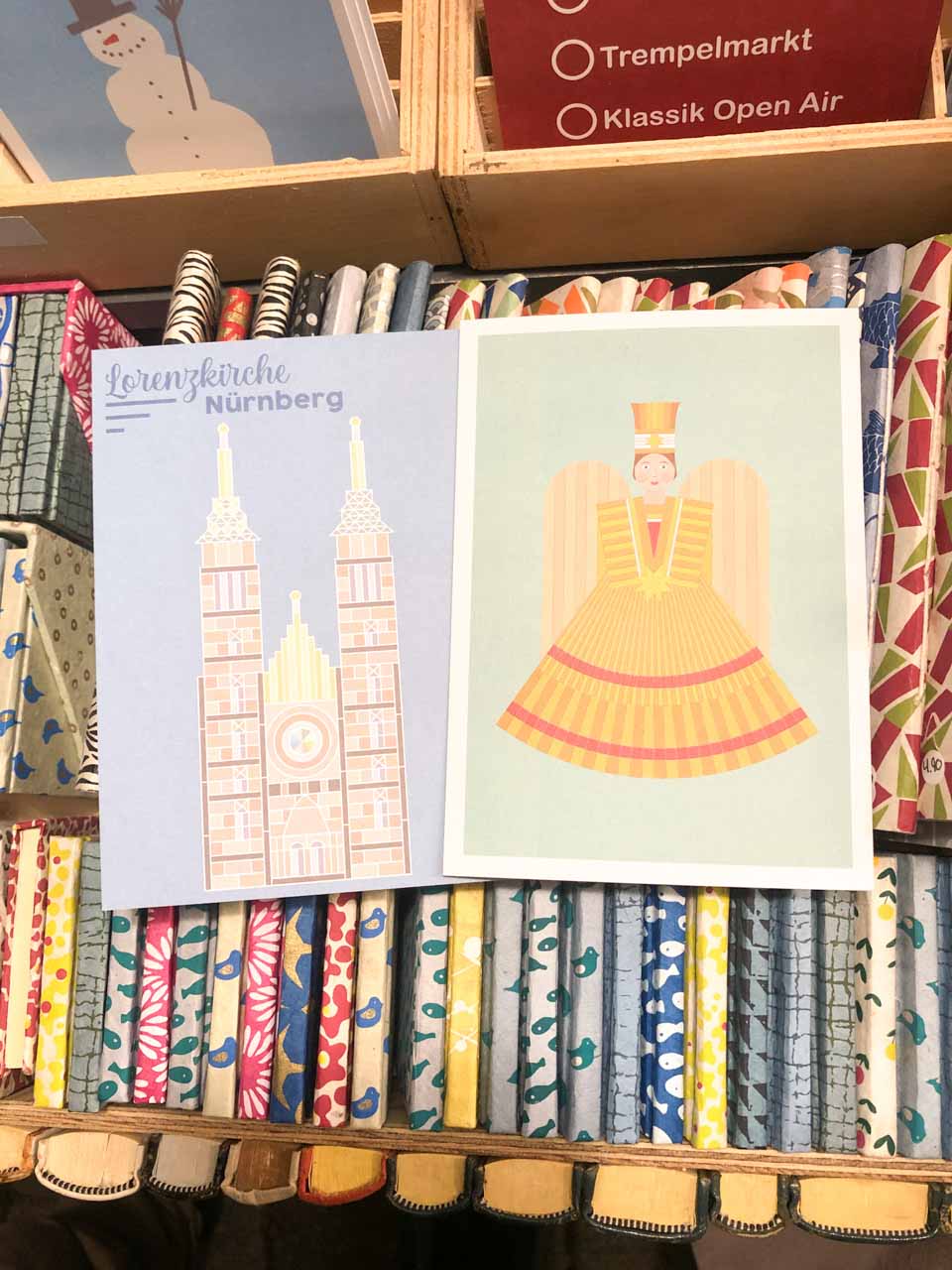
The Christkind, or Christ Child, is an angel-like creature dating back to the days of Protestant Reformation in Germany. Martin Luther came up with it to replace the Catholic figure of Saint Nicholas who was believed to bring Christmas gifts to the children at that time.
Every two years, a local young woman (between 16 and 19 years old) is chosen to play this role, becoming the face of the market and a beloved icon of the city’s festive celebrations.
The market takes place on the square in front of the Church of Our Lady. There are over 180 wooden stalls with red and white striped roofs, selling all kinds of festive food and Christmas decorations, from gingerbread and baubles to the merch of the local football team, 1. FC Nürnberg. It’s where the official Christmas market opening ceremony takes place each year too.
You can also find a range of licensed products with the original Christkindlesmarkt logo, including cookie cutters, postcard stamps, the Nuremberg Christkindlesmarkt punch, and many more.
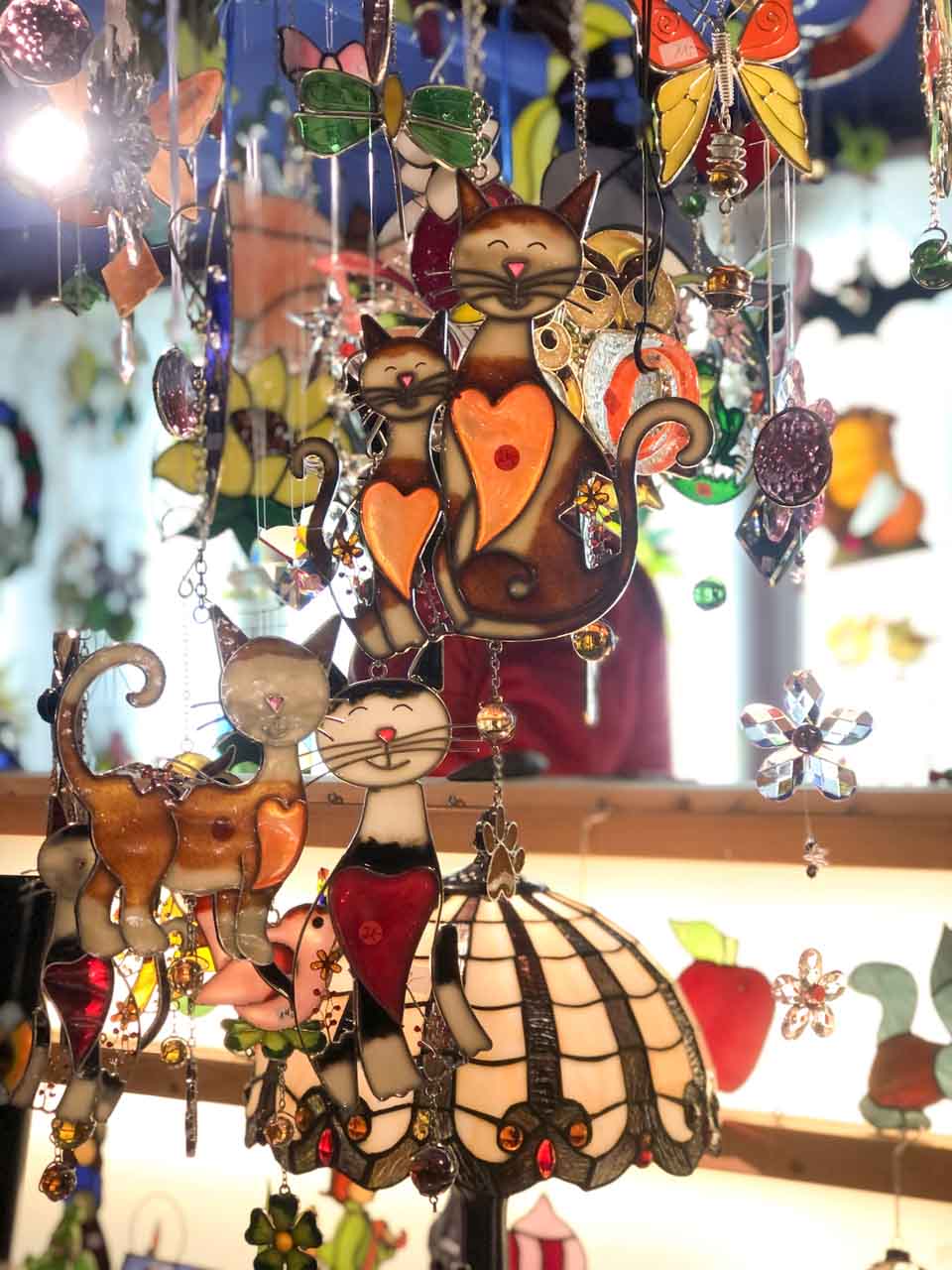

Once you’re there, look for the Schöner Brunnen fountain next to the town hall. There are two brass rings on opposite sides – according to a legend, if you rotate the golden one clockwise, your wishes will come true.

To make navigating this massive market easier, I came across a great resource on the official Christkindlesmarkt website. They have several self-guided market tours, depending on what your interests are, which you can download in the form of a PDF and keep on your phone!
Original Regional Market
📍Location: Close to Sebalduskirche (St. Sebaldus Church)
Calling this one a separate Christmas market may be a bit of an overkill, as it consists of just a few booths near the Church of St. Sebald. It’s only a 1-minute walk away from the Christkindlesmarkt, so some might consider it a natural extension of the main market.
If you’re into organic, locally made products, or are buying Christmas gifts for someone who is, you’ll feel right at home here. At the Original Regional market stalls, you can find all kinds of culinary treats and traditional handicrafts from the region of Franconia (where Nuremberg is located).
These include specialty mulled wines, homemade schnapps and brandies, fruit spreads and preserves, organic handmade soap, regional honey and beeswax products, and many more. What I found particularly interesting was that even the liquorice garlands used to decorate the booths were locally grown, and the glass bulbs that lit the area were locally hand-blown!
However, if you’re looking to do some last-minute shopping, bear in mind that it closes a day earlier than the Christkindlesmarkt, on 23rd December.
Markt der Partnerstädte, the Sister Cities Market
📍Location: Rathausplatz square
If you go a minute north of the Christkindlesmarkt, to the other side of the Church of St. Sebald, you’ll find yourself at the Sister Cities Market. This was definitely the most interesting Christmas market we’ve been to in Nuremberg, with its unique nature deeply rooted in the city’s history.
Back in the Middle Ages, Nuremberg was a bustling trade centre, strategically placed on a major route for long-distance commerce. The city’s merchants had extensive connections and sold their wares all over Europe. However, over time, Nuremberg’s prominence shifted to the western European sea ports. Then, during World War II, the city became infamous for the Nazi rallies held there by the Third Reich.
In a bid to mend its international ties post-war, Nuremberg launched several initiatives, including the Sister Cities Market. This market is a global bazaar, where Nuremberg’s sister cities and partner communities showcase their local goods and crafts.


Each city has its own booth, offering everything from hot toddies and Nicaraguan coffee to Venetian masks, and even ceramics and soap from Nablus, Palestine. Plus, there’s a stall run by the Department for International Relations, where all sales proceeds go to charity in these sister cities.
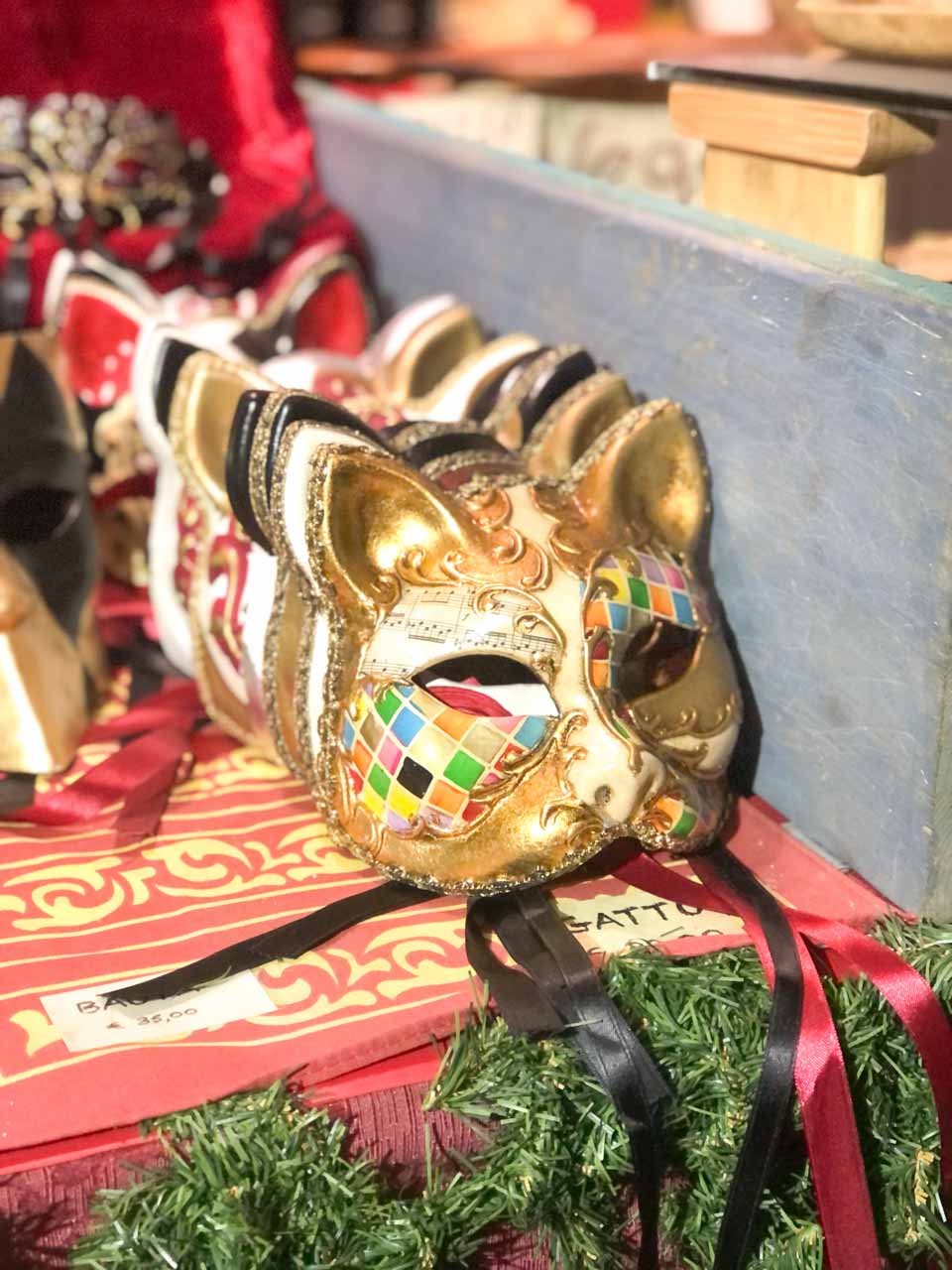

If you’re looking for one-of-a-kind Christmas gifts or souvenirs, this market is your go-to spot. Oh, and don’t miss out on the mulled wine with African spices at the Aného, Togo stall. It’s a delightful twist on the classic Glühwein that you just have to try! Just like the Original Regional market, it closes on 23rd December, so make sure to plan accordingly.
Kinderweihnacht, the Children’s Christmas Market
📍Location: Hans-Sachs-Platz
Next up, we have the Kinderweihnacht, or the Children’s Christmas Market. But, don’t let the name fool you – adults can have a blast there too, just like we did!
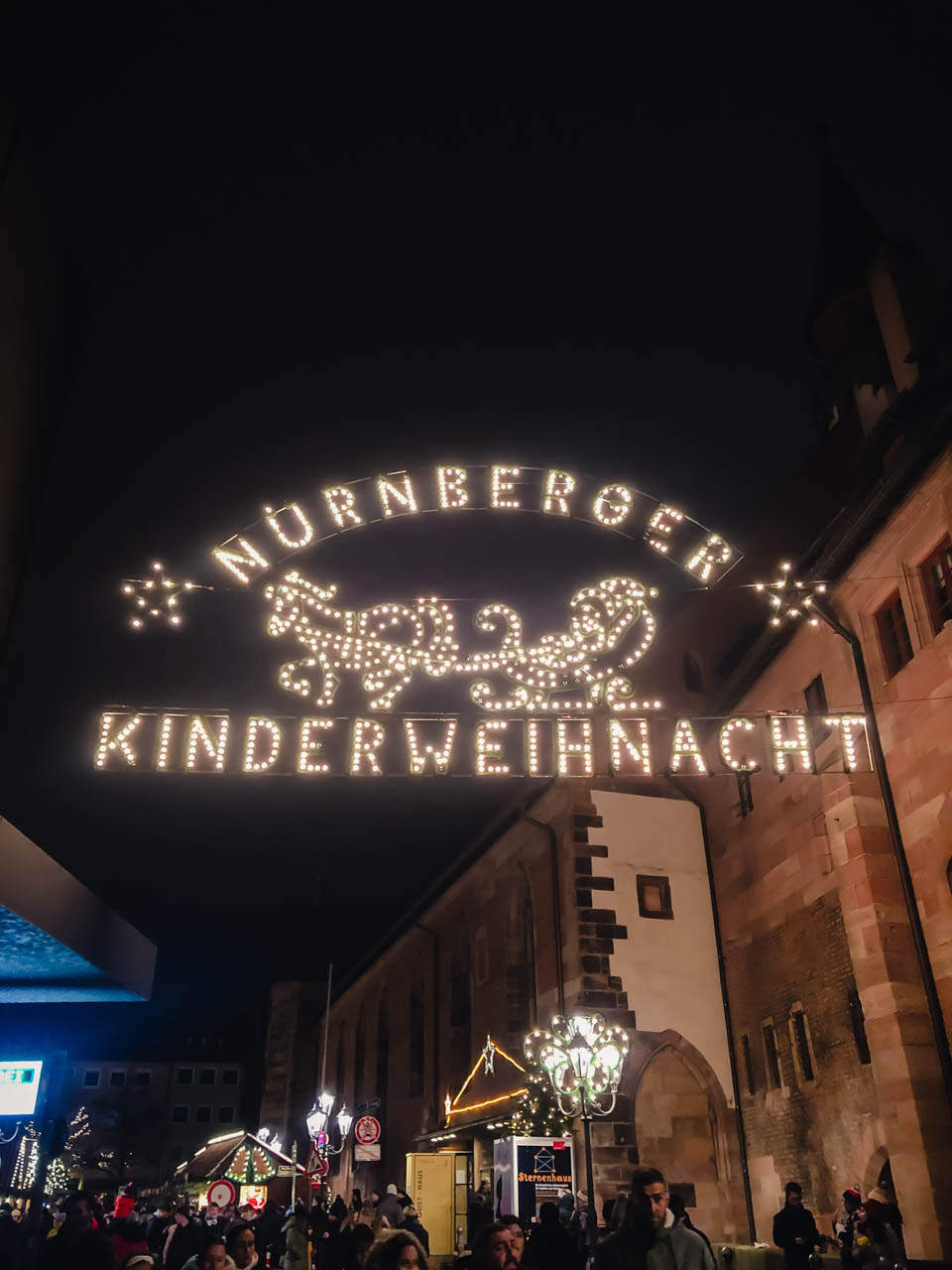

Honestly, we wish we’d found it sooner because we ended up spending most of our time there. The Christkindlesmarkt is massive, but it doesn’t quite have the cosy vibe of the Winterwald im Hamburg Christmas market. The Children’s Christmas market, however, totally delivered on that front.

It’s a little winter wonderland with a merry-go-round at its heart, a mini Ferris wheel, a steam train, and stalls adorned with charming moving figures. Our personal highlight? The pair of snowmen playfully tossing fake snow at passersby!


It’s a paradise for kids, with activities like cookie baking and decorating, and even candle-making. On special days, children can meet the Nuremberg Christkind in person and enjoy free merry-go-round rides. As for the adults? There’s plenty of festive food and drinks to savour, and we may or may not have given the merry-go-round a whirl ourselves 😉


Plus, this market stays open until 30th December, a whole week longer than the others, so you can keep that festive cheer going just a bit more!


Feuerzangenbowle Village
📍Location: below the Fleischbrücke, right next to the Starbucks at Hauptmarkt 1 street
Finally, in Nuremberg, you’ve got the unique chance to try a sip from the world’s largest Feuerzangenbowle! If you’re not familiar, Feuerzangenbowle is a beloved German holiday drink. It’s made by setting a rum-soaked sugarloaf on fire and letting it drip into a bowl of mulled wine, giving it a truly special flavour.

We first got a taste of this festive treat at the Düsseldorf Christmas Markets, thanks to a family friend. Beware, though – it’s a lot stronger than your typical mulled wine, with the sweetness cleverly disguising its kick!


Usually, with smaller Feuerzangenbowle setups, you can watch the whole preparation process. But in Nuremberg, the scale is so grand that it’s a bit different. Imagine a punch bowl that’s 2.5 metres wide and 3.4 metres tall, capable of holding a staggering 9,000 liters of Feuerzangenbowle. Heating up this enormous quantity to just the right temperature takes a whopping 48 hours!

And it’s not just about the drink; there are several huts around where you can grab some food and other drinks, making it the perfect spot for a festive get-together with friends.
What food and drinks should you try at the Nuremberg Christmas Market?
German Christmas Markets aren’t just a visual treat – they’re also perfect for food lovers, as they’re filled with all sorts of festive goodies. The most popular food and drink options include Currywurst (sliced pork sausage with ketchup and curry powder), Glühwein (spiced mulled wine), Kartoffelpuffer (crispy potato pancakes, traditionally served with a dollop of apple sauce), or Stollen (a dense, sweet bread with dried fruits, nuts, and spices, dusted with a snowy layer of powdered sugar).
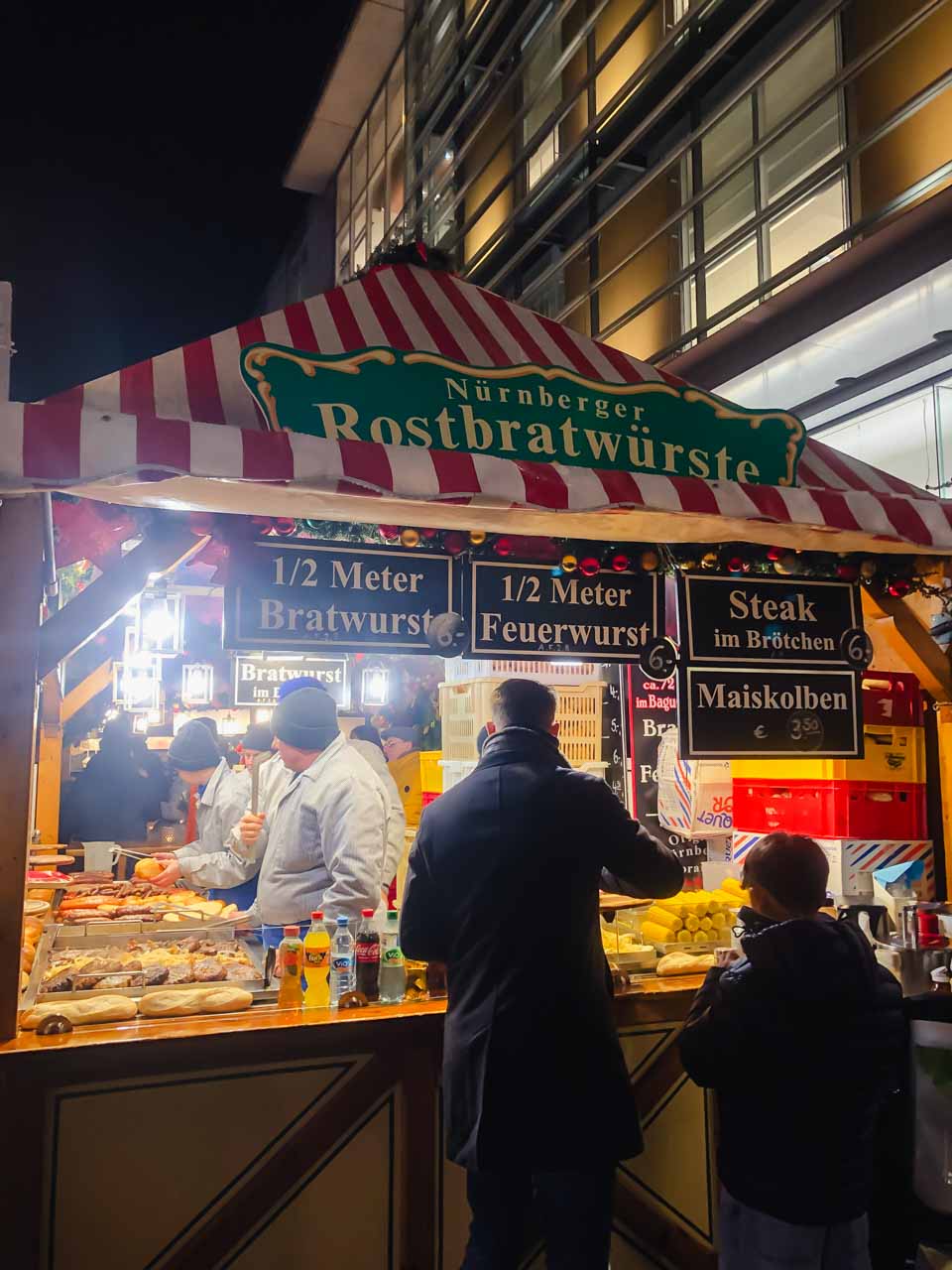

But Nuremberg’s markets have their own special treats that you won’t find just anywhere. I’ve already raved about the giant Feuerzangenbowle, but there’s so much more to discover and savour here.
Let’s dive into the unique culinary delights you simply must try when visiting Nuremberg!
Heidelbeere Glühwein – Blueberry mulled wine
In Nuremberg, they’ve put a delicious twist on the traditional Glühwein by introducing Heidelbeere Glühwein. This isn’t your everyday mulled wine; it’s made with specially selected Italian wines and infused with a secret mix of spices. It’s a fruity, refreshing change from the usual and a definite must-try for anyone looking to mix up their mulled wine game.
Last year, regular mulled wine at the Nuremberg Christmas Markets started at €4. You can also opt for a version “mit Schuss”, which means that they will add a shot of stronger liquor. A mug of mulled wine with amaretto cost me €6.
WinterWärmer
For those who fancy a break from wine, Nuremberg’s got you covered with WinterWärmer. Brewed by the pioneering Hausbrauerei Altstadthof, Germany’s first fully ecological brewery, this spiced beer is a real treat. Made with a blend of nine spices and served with a zesty orange wedge, it’s a top-notch, eco-friendly beer experience that’s as unique as it is tasty.
Drei im Weggla – Three in a bun
No visit to Nuremberg is complete without savouring ‘Drei im Weggla’ – three Nuremberg sausages in a bun. To be a true Nuremberg sausage, it must meet strict criteria: each sausage has to be under 9 cm long, weigh no more than 25 grams, and be made right within the city limits. Last year, it cost me €4.
For a true taste of tradition, swing by Peter Lößel’s booth (number 78). His Nuremberg Bratwurst, crafted from a secret recipe over 700 years old, is nothing short of legendary.
Nürnberger Lebkuchen
Over the years, German gingerbread has become a Christmas market staple, but did you know it was actually invented in Franconia in the 13th century?

What sets the Nuremberg variety, called Elisenlebkuchen, apart is the higher nut content – at least 25% nuts and less than 10% wheat flour. Some local bakeries even go up to 40% nuts! Soft, chewy, and often coated in dark chocolate or sugar glaze, sometimes topped with almonds, it’s a gingerbread experience like no other.
You can find these delightful treats at Wolfgang Woitinek’s booth or grab some from Wicklein, the oldest gingerbread bakery in town, for a tasty souvenir.


What souvenirs should you buy at the Nuremberg Christmas Market?
If you’re looking to do some festive shopping at the Nuremberg Christmas Markets, there are plenty of options for you to choose from. From the classic market staples like shimmering glass baubles, cosy handmade scarves, and candles that smell like Christmas, to unique finds that are special to Nuremberg, there’s something for everyone.

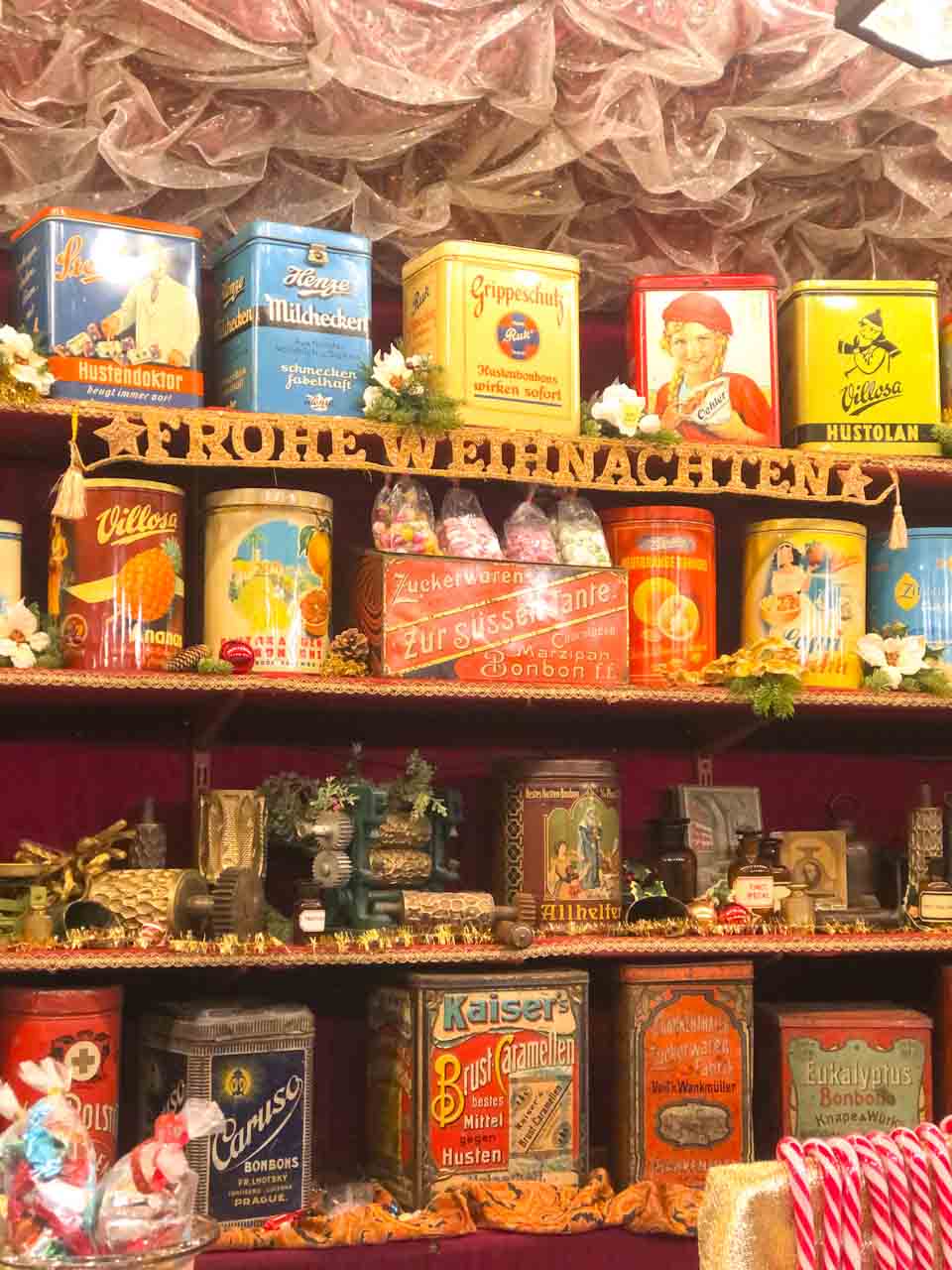
Now, I’m usually all about the food and the festive atmosphere, and rarely do any shopping, so I’ll focus on just a few select items that caught my eye. You’ll find a fantastic selection of traditional goodies at the Christkindlesmarkt, but if you’re after something a bit different, the Original Regional and the Sister Cities markets are your go-to spots.



Zwetschgenmännle – Prune Men
Zwetschgenmännle, also known as Prune Men, are quirky little figures made from dried prunes and other fruits and nuts. They are a true Franconian craft, especially beloved in Nuremberg.
The art of crafting Zwetschgenmännle goes way back, and it’s a big part of the region’s folk art. Legend has it, they were first made by a resourceful Nuremberg wire drawer in the 18th century, who wanted to create something special for his kids using just his wire and a plum tree.


These figures, which range from simple characters like chimney sweeps and musicians to more complex scenes depicting everyday life or festive occasions, are purely for show these days – and you’ll often see signs reminding you that they’re not for snacking on. For the most authentic Zwetschgenmännle, head to Julian Scheller’s booth (number 90), where a fifth-generation artisan keeps this whimsical tradition alive.
Glühwein cup
One of my favourite things about German Christmas Markets is the tradition of serving hot drinks in ceramic mugs. In Nuremberg, the official Christkindlesmarkt mug is redesigned every year, making it a sought-after collector’s item.
When buying your drink, you have to pay a deposit for the mug (Pfand) – usually €2 or €3. You can then choose to return it for your deposit or keep it as a charming souvenir. I’ve heard you can even ask to exchange it for a clean one if you’d like to take it home.
Licensed products
When you’re wandering through the festive stalls, keep an eye out for the official licensed products of the Nuremberg Christmas Markets. These exclusive items, from handmade Christmas decorations to clothes and wooden toys, all sport the official Christkindlesmarkt logo and capture the essence of this festive event. There’s even a dedicated self-guided tour on the official Christkindlesmarkt website to make sure you catch all these special items!
Käthe Wohlfahrt
No trip to the Nuremberg Christmas Markets is truly complete without popping into a Käthe Wohlfahrt store. It’s like stepping into a Christmas wonderland, boasting the world’s largest selection of German Christmas decorations. You’ll find everything from delicate handcrafted ornaments to nativity scenes and candles – perfect for adding a slice of German Christmas magic to your home. It’s definitely on the pricier side, but if you’re looking for a unique ornament for your tree or a special gift, this is the place to go. And for the Christmas fanatics, their main shop in Rothenburg ob der Tauber, just an hour’s drive from Nuremberg, even has a Christmas Museum!


Have you ever been to any German Christmas markets?


